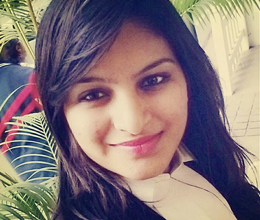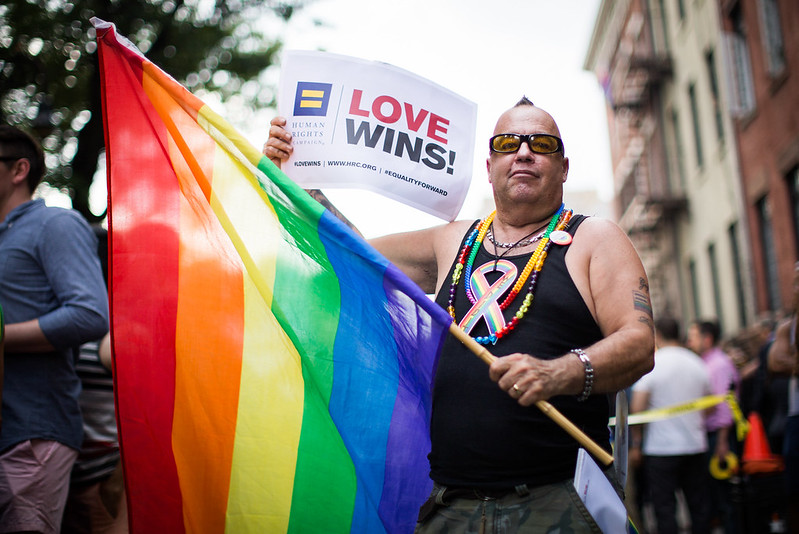The journey of queer community thus far:
The queer community saw a ray of hope with the decision in National Legal Services Authority v UOI (NALSA). The Hon’ble Supreme Court in this decision recognised persons falling outside the male-female binary as third gender persons. It declared that they have the same constitutional rights as the others. It also directed the Union and State legislatures to grant legal recognition to persons who self identify as transgenders.
Next in KS Puttuswamy v UOI, the Hon’ble Supreme Court recognised that the constitution protects the right of an individual to exercise their sexual orientation.
Then came the important decision in Navtej Singh Johar v UOI wherein the court held Section 377 of Indian Penal Code (IPC) unconstitutional. Section 377 criminalised consensual sexual activities by the queer community. This, the court said violates Article 15 and Article 19 of the Indian Constitution. Article 15 as it prohibits discrimination based on sex which includes within its meaning ‘sexual orientation’, and Article 19 as Section 377 impedes ‘sexual privacy.’
In this judgement, Justice Chandrachud had observed that sexual privacy does not just mean the private sexual activities. It also includes the right to choose who to partner with, right not to be discriminated against and the benefit of equal citizenship irrespective of how they find fulfilment in sexual intimacies. So, this judgement not only decriminalised same gender sex but also recognised the duty of the state in preventing discrimination against the queer community.
Unfortunately, in spite of this judgement, the queer community continued to be socially, economically and politically oppressed both in urban and rural areas in subtle and not so subtle ways. The court observed how the risk of oppression and violence is higher in rural areas and discussed various instances including one of a woman having eloped with another woman. They were then beaten, stripped and paraded around the village with blackened face and a garland of shoes around their neck.
This oppression stems not just due to social norms and beliefs but also lack of efforts from the state to spread awareness and the failure to include queer community in the public sphere. The washrooms, ticket counters, security checkpoints etc., are all strictly segregated based on gender binary. Accordingly, the Hon’ble Supreme Court in NALSA directed the State to take appropriate steps to prevent the oppression against the community and to spread awareness regarding the struggles of the community.
The State then enacted the Transgender Persons (Protection of Rights) Act, 2019. It aims to protect the transgender community from discrimination and provide opportunities in the educational and social sectors. However, in spite of this legislation, the community continued to be discriminated against to the extent of facing physical and sexual violence. They are also denied equal citizenship as they are forced to undergo sex-reassignment surgeries before they are granted rights as transgenders.
Hence, the queer community yet again took their grievances to court. They pleaded that in spite of these developments, the members of the LGBTQIA+ community are not just discriminated informally, but formally. This is because they do not have the same rights as that of the heterosexual community. So, they pleaded that the court give legal recognition to their relationship with their partners in the form of marriage. As from such recognition of marriage stems various other benefits and rights.
Main submissions of the Petitioners:
A. Queer community’s right to marriage
(I) It is a fundamental right
This court has directed that the queer community must be treated with equality, dignity and privacy which includes the fundamental right of marrying a person of their choice. Therefore, statutory recognition of such right is only a consequence of what the court has already held. Dr. Abhishek Manu Singhvi further submitted that marriage is not just a benefit but a source of social validation from which stems other legal and civil benefits such as tax, inheritance, adoption etc.
(II) Various benefits accrue from marriage, and the present interpretation of certain terms is unjust to the queer community-
Mr. K.V. Vishwas submitted that as per Union of India’s submission if the terms ‘man’ and ‘woman’ were interpreted to mean only cisgender man and woman, then it would lead to unjust outcomes in the interpretation of several laws. For instance, the Hindu Succession Act 1956 defines ‘heir’ as any person, male or female. This means a transgender person would not be able to inherit the property even if they were the sole heir.
B. On reading in the provisions of Special Marriage Act, 1954 (SMA) and Foreign Marriage Act, 1969(FMA) to enable queer people to marry
I. Exclusion of queer community is violative of constitutional rights
- The objective of SMA is to allow civil form of marriage between two persons who cannot or do not choose to marry under the personal laws. Hence, the exclusion of queer community makes this Act violative of Article 14, Article 15, Article 19 and Article 21 of the Indian Constitution.
- Similar line of argument was made for amendment of FMA. Geeta Luthra submitted that the object of FMA is to extend the protection of constitutional rights to a citizen abroad regardless of who they choose to marry. Hence, the exclusion of same-sex couples and gender non-conforming couples has no nexus with the objective of the Act. Therefore, it is violative of the constitutional rights of the queer community.
II. Such reading in is not violative of separation of powers –
- In a case where a statue violates the constitutional rights, the court can either declare it unconstitutional or read it expansively to uphold its constitutionality.
- Hence, SMA must be read in a gender neutral manner. The terms ‘husband’ and ‘wife’ ought to be read as ‘spouse’. Transgender persons can either fall into the category of ‘man’ or ‘woman’ depending on the gender they identify with. In doing this, the court is not being asked to substitute for the legislature or change the concept of marriage. It is only being asked to read the provisions of SMA in a manner that is constitutionally compliant. This is akin to how the declaration of transgender rights in NALSA gave rise to the Transgenders Persons Act.
C. Adoptive rights of queer community
Petitioners submitted that Adoption Regulations 5(2)(a) and 5(3) that disallows same-sex couple and gender non conforming couples from joint adoption is against the Juvenile Justice (Care and Protection of Children) Act, 2015 (JJ Act). This is because JJ Act is the parent act, and Section 2(49) of the JJ Act does not require the prospective adoptive parents to be heterosexual. Also, Section 57 of JJ Act does not specify the marital status as a requirement.
Main submissions of the Respondents:
A. Jurisdictional challenge and queerness is an unindian, elite concept
- The Respondents submitted that if Hon’ble Supreme Court decided on non-heterosexual people’s right to marriage, it would overstep the doctrine of separation of powers.
- They also submitted that the concept of queerness is not native to India. It is a borrowed concept by the elite section of the society, and this is hardly seen in the rural areas or in the working class in India.
B. Queer community’s right to marriage
- The prominent components of a marriage are companionships, sexual intimacy and most importantly procreation. It contributes towards proliferation of future generations.
- Marriage is a creation of statutes. Entry 5 of List 3 of Seventh Schedule gives the State the power to regulate the institution of marriage. State is not under the obligation to recognise all types of union. It only recognises unions that has legitimate state interest which in case of heterosexual unions is the sustenance of society.
- Article 21 gives right for the person to choose a partner of their choice. However, the legal recognition of such partnership is not a fundamental right under Article 21. Right to marry cannot be traced to right to privacy as right to privacy requires non-interference from the state. However, State has regulated marriage with respect to the minimum age for marriage, number of partners etc.
- It is for the Parliament to enact a code regulating non-heterosexual couples union and the issues that may come up before and after such partnerships. It must be done after engaging with all the stakeholders. If the courts grants legal-recognition to such a union, then it be against the separation of powers. It would also require redesigning of several enactments and rules.
C. Reading in the provisions of SMA and FMA to enable queer community to marry
- SMA is a species of the general marriage laws. Marriage is conceived as union between heterosexual couples across all laws of marriage. SMA was enacted to enable union of heterosexual couples irrespective of caste and religion. Hence, the exclusion of non-heterosexual couples does not render it as unconstitutional. It can be considered under-inclusive only when a class of heterosexual couples are excluded.
- Reading the provisions of SMA in a gender neutral manner would render the implementation of Section 19 to 21A difficult as they are linked with other personal and non-personal laws. Besides, courts can read into the laws only if the purpose of the Act is not met which is not the case here.
D. Adoptive rights of queer community
- State’s legitimate interest also lies in the protection of the interest of children. Children born out of surrogacy, artificial insemination technologies or adoption will always feel the absence of a mother or a father. Also, the petitioners have not produced enough data to back that children of non-heterosexual couples feel protected.
- Additionally, in relation to the issue of adoption, Ms. Aishwarya Bhati, Additional Solicitor General submitted that a child born to heterosexual couple naturally seeks out an environment which is comparable to their birth family. Principle xiii of Juvenile Justice Act states that a child has the right to be restored to the same socio-economic and cultural status as they were earlier in. Thus, children cannot be made guinea pigs by imposing emerging and evolving nature of gender fluidity upon them.
Analysis of the court:
A. Jurisdiction and whether queerness is an elite, unindian concept
(I) This court has the authority to hear this case
The court with the help of various case laws observed that in exercising its power of judicial review, the court does not make policies or law. Thus, it does not interfere in the legislative domain but it highlighted the wide scope of power it has under Article 32. This power includes not just striking down a law that offends fundamental rights but to also compel the state to do something that gives effect to such rights. Therefore, in this case as well, it will determine the scope and extent of certain fundamental rights of the queer person.
(II) Is queerness unindian?
The court struck this argument down by observing that in India persons who do not fit in the binary of ‘male’ or ‘female’ have been referred by names such as ‘hijras’, ‘kothis’ ‘aravanis’ etc. In fact the term transgender does not accurately define gender identities of those who are known by some of these terms. It observed that transgenderism, homosexuality, queer sexuality are natural, age old phenomena historically present in Indian culture. They have not been imported from the west.
The court further observed that that ‘a thing, an occurrence, or a practice is Indian when it is present in India, takes place here, or is practised by Indian citizens’. Something which is Indian could be present from time immemorial or could be of recent occurrence. Regardless, the constitutional guarantee does not fade based on the level of acceptability that a particular practice has achieved.
(III) Is queerness urban and elitist concept?
The court struck down the Respondent’s argument that queerness is an urban or elitist concept by observing that nothing can be further from the truth. The court observed that English words such as ‘gay’, lesbian,’ ‘transgender’ etc., may not be used. However, the court gave several instances of people belonging to rural regions of India, people belonging to working class backgrounds, even those belonging to OBC and Dalit communities who have expressed their homosexuality or queer identities.
Additionally it also referred to the report released by The AIDS Bhedbhav Virodhi Andolan (the AIDS anti-discrimination movement) titled ‘Less than Gay in 1991’. This report details various experiences of gay men and lesbian women. It includes stories of lesbian hospital warden, gay teacher in government polytechnic college in Madhya Pradesh, an auto rickshaw driver in Pune, two male municipal sweepers in Mumbai, and a gay man from a slum in Delhi. Furthermore, it explores various other literature and reportage to highlight the right history of the queer community. The court mentioned that all these instances don’t even scratch the surface of the history, hence making it abundantly clear that queerness and homosexuality is not an urban concept.
B. Queer community’s right to marriage
(I) Understanding the institution of marriage
There is no universal concept of marriage. It is understood differently in law, religions and culture. In some religions, it is a sacrament, and in some a contract. Marriage is valid as long as the pre-requisites are met, and pre-requisites are different from characteristics of a marriage. With this, the court listed some features that are considered core components of a marriage.
(A) Marriage is a voluntary union of the mind, body and soul. It signifies deep commitment and devotion to the relationship
(B) It is a life-long relationship wherein both parties provide emotional, financial, spiritual support to each other
(C) Love, respect and companionship are hallmarks of a successful marriage.
The court further observed that marriage is a gateway to procreation but is not a precondition to the existence of a family or the sole purpose of a marital relationship. Marriage is not to facilitate sexual relations or procreation although it may be one of the main motivators for entering into marriage.
(II) The concept of marriage is not static
The concept and characteristics of marriage has changed and evolved over time. From sati, widow remarriage to child marriage, to inter-caste or interfaith marriages, marriage has metamorphosed. The institution we know today may perhaps be unrecognisable to our ancestors.
(III) The significance of marriage as a socio-legal institution
The court discusses the manner in which State regulates marriages –
A. It prescribes conditions as to who can enter into a valid marriage – minimum age, conditions of consent, whether the parties are in prohibited relationship etc.
B. regulates marital relationship during its sustenance – laws against dowry, domestic violence, prescribing valid grounds of divorce
C. regulates the repercussions of breakdown of a marriage – prescribing the payment of maintenance, alimony etc.
The court struck down the learned Solicitor General’s argument that State regulates heterosexual marriages only because there is public interest in sustaining humankind through procreation. It observed that this submission is erroneous as the two main reasons why marriages are regulated is –
- to eliminate inequality of the power structure in a relationship. The court observed relationships could be unequal based on sex, power, religion, caste etc. This makes one exploited or subjugated. Hence, there are laws against dowry harassment and domestic violence.
- it contributed towards creating a more independent and self-sufficient citizenry.
In fact, state does not compel a married heterosexual couple to procreate nor is marriage a criteria for procreation. Instead, as per the Medical Termination of Pregnancy Act, 1971, it recognizes the woman’s autonomy over procreation.
(IV) Whether queer community has fundamental right to marry
The court observed that the Indian Constitution does not recognize the fundamental right to marry. Marriage, however, has attained significance due to the benefits that one can realize through regulation of marriage.
(V) The implications of the above discussions on the right of queer community to marry
Below are the varying opinions on this in brief-
(A) Chief Justice and minority opinion
The significance of marriage lies in the various tangible and intangible benefits that arise from it. As the learned Solicitor General submitted, while there is no prohibition against two queer persons holding marriage ceremony, the same is not recognized by law. Thus denying the queer community, the social and material benefits that flow from it.
The Hon’ble Chief Justice observes that even though the Indian Constitution does not explicitly mention it. A reading of the provisions in Part III and IV of the Indian Constitution gleans an understanding that it seeks to improve the quality of life and free the potential of each person to enable the citizenry to achieve the goal of self-development. The court further observes that it is not enough if people are able to form associations that are unregulated by State.
For full enjoyment of such relationships, there needs to be State recognition, to ensure there is no denial of access to basic goods and services. This is crucial to achieve the goal of self development. He classified relationships between two persons into (a) relationships that do not have legal consequences and (b) Unions that have legal consequences and marriage.
The Hon’ble Chief Justice has concluded that while there is no fundamental right to marry, there is a right to enter into union as held in K.S Puttaswamy, Navtej, NALSA. This, he traces into Article 19(1)(a), (c) and (e), Article 21 and Article 25. This necessitates or places a positive obligation on the State to accord recognition to such unions.
(B) Justice Ravindra Bhat and majority opinion
Justice Ravindra Bhat agreed with the Hon’ble Chief Justice to the extent that there is a right to relationship. This includes right to choose partner, cohabit, enjoy physical intimacy, right to live the way they want to and other rights that flow from privacy, autonomy and dignity. However, he disagrees with reading this into the positive postulates of fundamental rights and placing an obligation on the State to recognize such unions.
In furtherance of this, he discusses an analogy of a poet who wishes to share their work with the public at large. While there is no direct restriction on this, the State’s role in facilitating this freedom of poet is limited. The court cannot direct the State to create a platform for this purpose, that would be a stretch. Similarly, there are various unenumerated rights such as the right to clean environment or right to shelter etc., which the court have been wary in how they can be enforced.
He further adds that there are intractable difficulties when civil right to marry is created through a judicial decision. Creating a parallel code for non-heterosexual couples would require conception of an entirely different code, and a new universe of rights and obligations. Therefore, majority of the judges disagreed that right to form union form part of right to free speech and expression under Article 19(1)(a), right to form associations (Article 19(1)(c)) along with Article 21, and any other positive obligation. `
VI. Unanimous decision on transgender persons’ right to marry
Before addressing this issue, the Hon’ble court found it necessary to briefly discuss the difference between sex, gender and sexual orientation.
A. Sex, gender and sexual orientation
Sex – the reproductive organs and structures that people are born with.
Intersex persons – those whose sex characteristics do not fit the typical notions of ‘male’ and ‘female’
Gender – As per Yogkarta principles, it is a person’s deeply felt and internal and individual experience of gender. This may or may not correspond with the sex assigned at birth.
Transgender person – It is one whose gender does not correspond with the sex assigned at birth. They may choose to undergo sex reassignment surgery to conform with their gender. However, they are transgender regardless of whether they choose or are able to undergo the surgery.
So, intersex and transgender persons are not the same. Intersex people have atypical reproductive characteristics and may choose to identify as ‘male’, ‘female’ or ‘transgender’.
B. Transgender persons in heterosexual relationships can marry
The court agreed with the submission made by Union of India that the issue of whether transgender persons can marry must be decided separately from the issue arising from SMA. Therefore, this court applied the Transgender Persons Act to decide whether they can marry.
The court harmoniously read the provisions of the Transgender Persons Act with SMA and observed that the SMA and the statutes that are incidental to marriage such as Domestic Violence Act, Dowry Prohibition Act, and Section 498A of IPC address heterosexual-patriarchal nature of relationship between man and woman.
The court observed that if a transgender person is in a heterosexual relationship and wishes to marry their partner, it would be governed by the existing laws as one party would be husband and the other wife. So a union between transgender man and cis-gender woman, transgender woman and cis-gender man and transman and trans woman can all be registered under the existing marriage laws. Nothing in these statutes means that the terms ‘bride’ and ‘bridegroom’, ‘man’ and ‘woman’, ‘male ‘ and ‘female’ apply only to cisgender male and cisgender female.
C. Reading in the provisions of SMA and FMA to enable queer community to marry
The Petitioners argued that Section 4 of SMA is unconstitutional as it governs only a heterosexual union, so by implication excludes the solemnization of marriage between two non-heterosexual people.
They submitted that Section 4(c) may be interpreted in the following way –
(I) for same sex couples – 18 years would be the minimum age for a lesbian couple. 21 years for gay couple. For transgenders, it would be 18 or 21 depending on the gender they identify with.
(II) For those who don’t identify with either man or woman, they could be governed by the age at which other laws stipulate one capable of making their own decisions. This is 18 years.
(III) Court could lay down guidelines until the Parliament fills in the vacuum.
They further submitted that Section 21 of SMA deals with succession of property. It states that succession between two people under SMA shall be regulated under the Indian Succession Act. However, Section 21A was introduced to link SMA with Hindu Succession Act if both parties marrying belong to Hindu religion.
The Petitioners submitted that either –
(I) the court could leave the question of succession open for future litigation or;
(II) To read the provisions of Section 21, HSA and ISA in a gender neutral manner
(III) Since religious and personal laws are beyond the scope of this litigation, the court could not consider this, which would simply mean that ISA would apply to all marriages under SMA.
The court observed that under such circumstances, either the court can strike down Section 4 or follow the model suggested by the petitioners.
If the court strikes down Section 4 for having implicitly excluded marriage between same sex couples, then it will take back India to the pre-independence era when people belonging to different castes/religions could not marry one another.
If the court reads into provisions of SMA and allied laws such as ISA and HSA, it would be entering the realm of legislature. Extensively reading words into numerous provisions would mean redrafting laws in the garb of reading words into the provisions.
Similar reasons were provided by the court to the challenge made by the Petitioners against the constitutionality of the provisions of FMA.
D. Queer Community’s right to form unions
(I) Article 19:
The court observed that the right to freedom of speech and expression under Article 19(1)(a) includes manifestation of complex identities of a person. This includes sexual identity, choice of partner, expression of sexual desire to a consenting party. Similarly, right to form associations under Article 19(1)(c) includes freedom to form intimate associations.
Apart from this, they also have a right to settle anywhere in India under Article 19(1)(e) of the Indian Constitution.
(II) Article 21:
Right to life and liberty:
The court observed that the facets of right to life and liberty applies to all atypical families. In Deepika Singh, this court recognized that familial relationships may take form of domestic, unmarried partnerships or queer relationships, and comprise of a single parent. Such atypical families also must be equally protected under the law and should have the benefits of social welfare legislations available to them.
Right to dignity, privacy and autonomy:
This includes having the right to choose one’s life partner. So, preventing members of queer community from entering into union is denying the validity of their sexuality. This is a violation of their right to autonomy which extends to choosing one’s own sexual orientation and gender identity. In KS Puttaswamy, this court has held that right to privacy extends to decisional privacy or privacy of choice.
Right to health:
Mental health is not just about absence of mental illness but ensuring that one’s mental health is thriving. The court observed that the mental health of queer community may suffer not just due to the discrimination faced by them but also because they are not allowed to enter into long lasting relationships. Further, it observed that Section 18 of the Mental Healthcare Act states that persons have right to access mental healthcare without discrimination basis gender or sexual orientation. Section 18 read with Article 21 means that queer have the right to complete mental health. A natural consequence of which is that they have a right to enter into long lasting relationships.
(III) Article 25:
Freedom of conscience does not just include freedom to profess, practice and propogate religion. It also includes right to choose life partner and how they build a life together. There are four exceptions to this right – public order, morality, health and Part III of the Constitution. The court observed that the Respondents have not demonstrated that any of this would be disrupted if there is a union between queer persons.
(IV) Article 15:
This Article states that no citizen shall be discriminated against based on religion, race, sex, place of birth or any of them. The court observes that ‘sex’ includes stereotypes based on sex. It has also held in its decision in Navtej that it encapsulates one’s sexual orientation as well.
So, with the above observations, the Hon’ble Supreme Court upheld that while there is no fundamental right to marry, the queer community has a right to form unions with a person of their choice.
E. The right of queer community to adopt children
Regulation 5 of the Adoption Regulation framed by the Central Adoption Resource Authority (CARA) provides the eligibility criteria for prospective adoptive parents. These Regulations are framed in exercise of the power conferred under JJ Act.
The Hon’ble Supreme Court compares the eligibility criteria provided under Section 57 of JJ Act and the Adoption Regulations and observed that –
(I) JJ Act requires that the prospective adoptive parents are physically fit, financially sound and mentally alert and highly motivated to raise a child. In addition the Regulations require them to not be convicted of a criminal act and not have a life-threatening medical condition.
(II) Both JJ Act and Regulations prescribe that a single male cannot adopt a girl child. In addition, the Regulations provide that a single female can adopt a child of any gender.
(III) While JJ Act provides that couples can adopt with the consent of both spouses, whereas a combined reading of 5(2)(a) and 5(3) of the Regulations elucidates that ONLY married couples can adopt and they have to be a in a stable marital relationship of at least 2 years.
In the light of this, the Petitioners submitted that the Adoption Regulation is ultra vires the JJ Act – it is a settled law that delegated legislation (Adoption Regulation in this case) must be consistent and cannot exceed the powers granted by the parent Act (JJ Act in this case). The Petitioners also submitted that discrimination on the basis of marital status is violative of Article 14 of the Indian Constitution.
Therefore, the Hon’ble Court examined whether the two restrictions placed by the Adoption Regulations-
(I) The couple must be married; and
(II) The couple must be in two years of stable marital relationship is violative of JJ Act and the Indian Constitution.
Given below is the minority and majority views on this:
Minority view:
The Hon’ble Chief Justice was of the opinion that since the JJ Act uses the word ‘spouse’ and does not expressly exclude unmarried couples. So, the requirement under 5(3) of CARA Regulation prescribing couples to be in 2 years of stable relationship is contrary to the tenor of JJ Act which is CARA’s parent act.
Besides, the court also observed that the usage of the term ‘stable’ is vague as it creates a legal fiction that marriages that last 2 years automatically qualify as stable relationship or if there are specific characteristics that would aid in characterizing a married relationship as a stable one.
Additionally, the Union of India has not been able to demonstrate that unmarried couples cannot be in stable relationship or that only single parent will be able to provide a more stable house than an unmarried couple. The court is of the opinion that stable household can come in many forms, and depend on various factors. Hence, the Regulations are violative of Article 14 of the Indian Constitution.
The CJI further observes that as per JJ Act, the Specialised Adoption Agency has to make home study report before a child is referred to them for adoption. The progress and well being of child is ascertained after the adoption as well. This home study must consider the couple’s capability without reference to their sexual orientation.
Majority view:
The majority view dissents with the Hon’ble Chief Justice in holding that Section 57(2) of JJ Act permits joint adoption by both married and unmarried couples. This is because an adopted child will enter into a family unit consisting of two parents, and acceptance of both parents is imperative and in the best interest of child.
When there is breakdown of a married couple, reference has to be made to laws relating, marriage, divorce, maintenance, guardianship, custody etc., to understand the obligations of the parent and right of the child. However, the law as it exists would not be able to offer protection to the child in the case of breakdown of unmarried couple, adopting jointly. Therefore, the requirement in the CARA Regulations that a couple be in stable 2 year marital relationship stems from the framework of all these legislations.
However, the court unanimously observes that the law as it exists is discriminatory against queer couples. This is because if a single man or woman adopts and then enters a relationship, they can enter into a marriage in order to be eligible to jointly adopt. However, this option is not available to queer couple.
Furthermore, the social reality that queer couples are adopting as individuals, but are residing together and raising the child together. This means that State arguably needs to enable full gamut of rights to such children. For instance, in the unforeseen circumstance of death of partner who adopted the child, the child would become ward of a relative who may not even be known to the child. However, the surviving partner who was parent for all practical purposes would be a stranger in law.
Major points of conclusion on rights of queer community:
- The court finally concludes that marriage does not necessarily need to have the elements one attributes it with. There are marriages where there is no procreation, no wider family circle, no matrimonial home etc. Yet, they are as successful as any other marriage. Marriage at its core is companionship, friendship, care, spiritual understanding that transcends all other content and context. These feelings is not unique to marriage. In fact, it has been enjoyed by many without that cover, for example, those in committed co-habitational relationship.
- Law does play a legitimising role and there is a feeling of exclusion that queer community suffers on a daily basis. While there is no fundamental right to marry, there is right to choice, dignity, non-discrimination and privacy, and such choice needs to be given some status and shape. However, how and what that should be cannot be dictated by court. Yet, court does observe that prolonged inaction by State would result in discrimination and injustice.
Hence, the court opines that the State has to take remedial action after consultation with all parties, especially state government and Union Territories. In relation to the this, the court relied on the statement made by the Union that it would set up a high powered committee chaired by Union Cabinet Secretary to undertake comprehensive examination of all relevant factors.
- Transgender persons have the freedom to marry under the existing statutory provisions.
- The court holds that Regulation 5(3) of CARA Regulations is not void, however, it highlights the disadvantageous position it puts on the adopted child of a single person who later enters a non-matrimonial relationship. It needs further consideration, but not by the court.
- The choice exercised by queer couples to live together must not be interfered with, and they must not face any violence or coercion.







